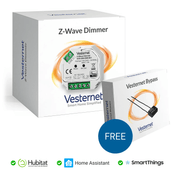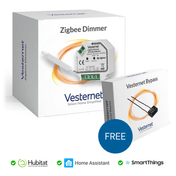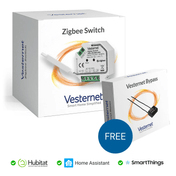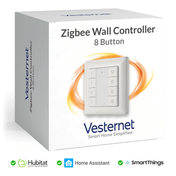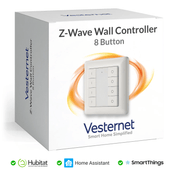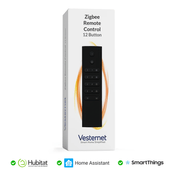Modern smart homes require sophisticated system architecture to manage multiple devices, protocols, and automation needs across lighting, security, climate, and entertainment systems, yet many homeowners struggle with fragmented installations that lack cohesive integration. Without proper planning, what begins as a simple smart home installation can quickly become a collection of disconnected devices that fail to work together effectively.
A well-planned smart home architecture provides unified control, seamless device communication, future-proof scalability, and enhanced reliability through strategic component selection and integration methodology. This comprehensive approach ensures your complete smart home system operates as a cohesive ecosystem rather than isolated components competing for attention and network resources.
Understanding Smart Home System Architecture Fundamentals
Smart home system architecture forms the backbone of any successful automation installation, establishing how devices communicate, process information, and execute commands throughout your property. Understanding these foundational concepts helps homeowners make informed decisions about protocol selection, device placement, and system hierarchy from the outset of their smart home journey.
Essential architectural layers in smart home systems:
- Physical layer comprising sensors, switches, and actuators installed throughout the home
- Communication layer managing wireless protocols like Zigbee, Z-Wave, and Wi-Fi networks
- Control layer featuring gateway hubs and automation controllers that process device information
- Application layer providing user interfaces and advanced automation logic programming
The relationship between these layers determines your system's reliability, responsiveness, and expansion capabilities. A well-designed full smart home system ensures each layer communicates effectively whilst maintaining redundancy and fault tolerance for critical functions like security and lighting control.

Strategic Planning for Complete Smart Home Systems
Effective smart home installation begins with comprehensive planning that assesses your specific needs, evaluates existing infrastructure, and creates a scalable blueprint for systematic implementation. This planning phase prevents costly mistakes and ensures your investment delivers maximum value through coordinated device selection and placement strategies.
Room-by-room analysis reveals automation opportunities whilst identifying potential challenges such as signal interference, power requirements, and aesthetic considerations. This systematic approach ensures your complete smart home system addresses practical needs whilst maintaining the flexibility to accommodate changing requirements over time.
Critical planning considerations for smart home architecture:
- Current and future automation needs assessment across all living areas
- Existing electrical infrastructure evaluation and upgrade requirements
- Protocol selection based on device compatibility and network performance
- Budget allocation for phased implementation and future expansion

Core Component Categories and Integration Points
Understanding the essential hardware categories within smart home architecture enables informed component selection and optimal system integration. Each category serves specific functions whilst contributing to the overall ecosystem's performance, reliability, and user experience through carefully designed integration points.
Primary smart home component categories:
- Gateway hubs providing centralised control and protocol translation capabilities
- Wireless sensors monitoring environmental conditions and occupancy patterns
- Actuators including motor controllers, relay switches, and dimming modules
- User interfaces featuring wall controllers, handheld remotes, and mobile applications
Integration points between these categories determine system responsiveness and automation sophistication. Proper component selection ensures seamless communication whilst providing the processing power and network capacity required for advanced automation scenarios and multi-room coordination.

Gateway Hub Selection and Multi-Protocol Integration
Gateway hub selection represents one of the most critical decisions in smart home installation, as this central component determines device compatibility, processing capabilities, and system expansion potential. Modern hubs support multiple wireless protocols simultaneously, enabling integration of devices from different manufacturers whilst maintaining optimal network performance.
Multi-protocol integration allows homeowners to select the best devices for each application without being constrained by single-protocol limitations. This flexibility proves essential for creating a complete smart home system that leverages the strengths of different wireless technologies whilst maintaining unified control and automation capabilities.
Key factors in gateway hub selection:
- Protocol support including Zigbee, Z-Wave, Wi-Fi, and Thread compatibility
- Processing power for complex automation and real-time device coordination
- Local processing capabilities reducing cloud dependence and improving reliability
- Expansion capacity for future device additions and protocol support updates
Control Interface Design and User Experience Planning
Control interface design significantly impacts daily interaction with your smart home system, making thoughtful placement and configuration essential for user adoption and satisfaction. Effective interface planning considers different user preferences, accessibility requirements, and the natural flow of daily activities throughout your living spaces.
Strategic considerations for control interface placement:
- Wall controller locations at natural entry and exit points for intuitive access
- Scene control integration for complex lighting and climate coordination
- Guest access options providing simple controls without complex programming
- Emergency override capabilities ensuring manual control during system maintenance
User experience planning extends beyond physical interfaces to include mobile applications, voice control integration, and automated responses that reduce the need for manual intervention. This comprehensive approach ensures your full smart home system enhances daily living whilst remaining accessible to all household members regardless of technical expertise.
Installation Methodology and Best Practices
Systematic installation methodology ensures reliable system performance whilst minimising disruption during the implementation process. Professional installation practices include network preparation, device commissioning protocols, and comprehensive testing procedures that validate system functionality before declaring the installation complete.
Network setup forms the foundation of successful smart home installation, establishing reliable communication pathways and proper security configurations. This preparation phase includes wireless network optimisation, device addressing schemes, and backup procedures that maintain system functionality during maintenance or upgrades.
Essential installation phases for smart home systems:
- Network infrastructure preparation and wireless coverage verification
- Gateway hub configuration and initial device pairing procedures
- Room-by-room device installation with systematic testing and validation
- Automation programming and scene configuration for daily use scenarios

Advanced Automation and Scene Programming
Advanced automation transforms your complete smart home system from manual device control into an intelligent environment that responds predictively to occupancy patterns, environmental conditions, and daily routines. Sophisticated programming enables energy optimisation, security enhancement, and comfort improvement through coordinated device responses.
Advanced automation capabilities in modern smart homes:
- Conditional logic programming based on time, occupancy, and environmental triggers
- Energy optimisation routines coordinating heating, cooling, and lighting systems
- Security integration linking sensors, cameras, and access control devices
- Adaptive scheduling that learns from usage patterns and adjusts automatically
Scene programming creates complex coordinated responses involving multiple device types and systems, demonstrating the true potential of integrated smart home architecture. These sophisticated automation scenarios provide convenience, efficiency, and security benefits that justify the investment in comprehensive system planning and installation.
Future-Proofing and System Scalability Strategies
Future-proofing strategies ensure your smart home installation remains relevant and functional as technology evolves and household needs change over time. Scalable architecture planning accommodates expansion whilst maintaining system performance and reliability through modular design approaches and component standardisation.
Technology evolution planning addresses backward compatibility maintenance, upgrade pathways, and emerging protocol integration to protect your investment in smart home infrastructure. This forward-thinking approach enables gradual system enhancement without requiring complete reinstallation or significant architectural changes.
Key strategies for long-term system scalability:
- Modular component selection enabling incremental expansion and upgrades
- Standard protocol adoption for maximum device compatibility and choice
- Infrastructure capacity planning for additional devices and network traffic
- Documentation maintenance ensuring system knowledge transfer and troubleshooting
Conclusion
A well-architected smart home system transforms daily living through seamless automation, enhanced security, and improved energy efficiency, whilst providing the flexibility to adapt and expand as your needs evolve and new technologies emerge. The systematic approach outlined in this guide ensures your investment delivers maximum value through coordinated planning, professional installation, and scalable architecture design.
Start your smart home journey by assessing your specific needs and selecting core components that align with your architecture plan, beginning with a robust gateway hub and expanding systematically through each room and function. This methodical approach prevents common integration challenges whilst building a foundation for advanced automation and future expansion.
Ready to explore complete smart home system components? Browse Vesternet's comprehensive collections of gateway hubs, wireless controllers, and automation devices, backed by expert guidance to help you design and implement your ideal smart home architecture.










